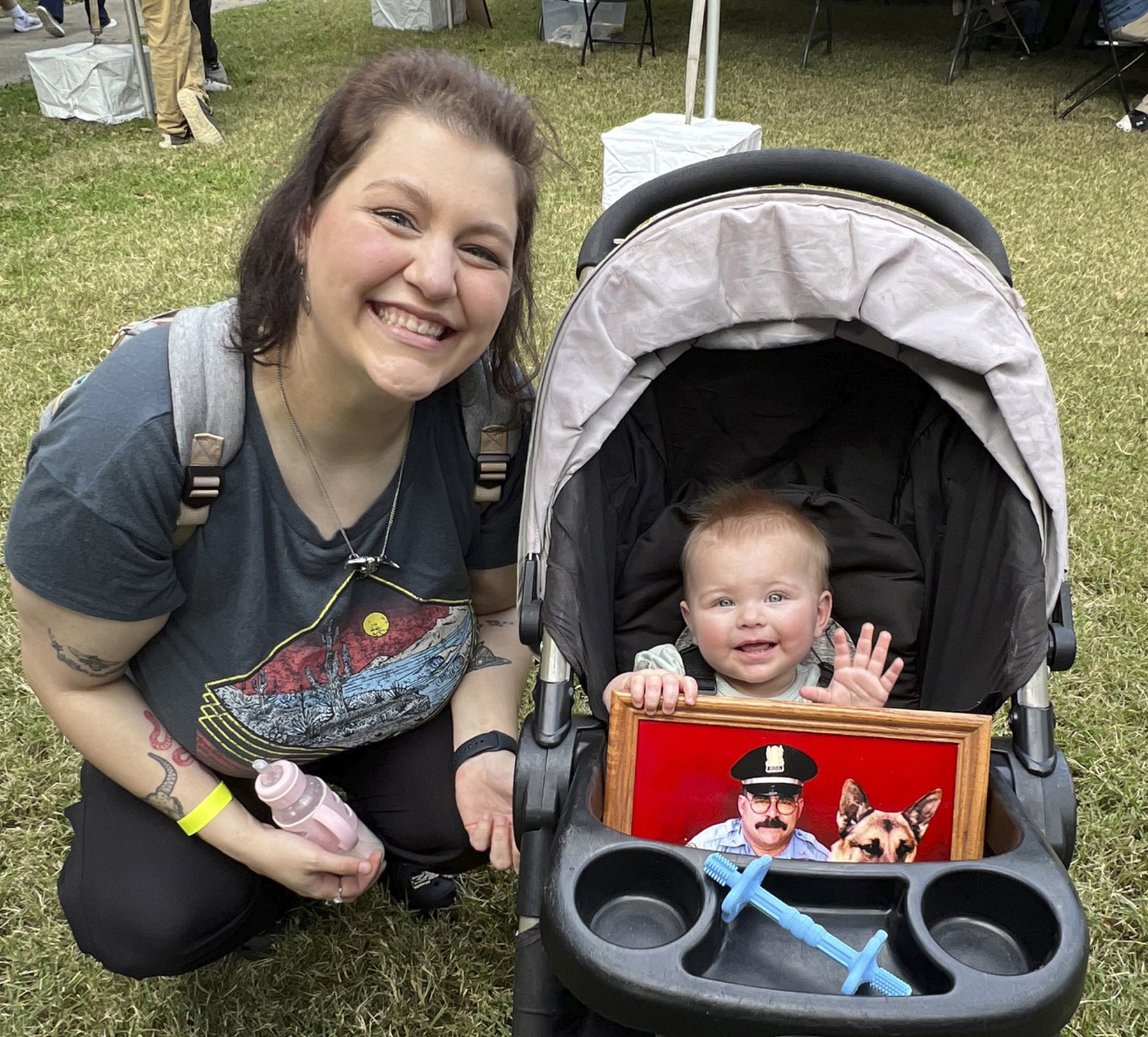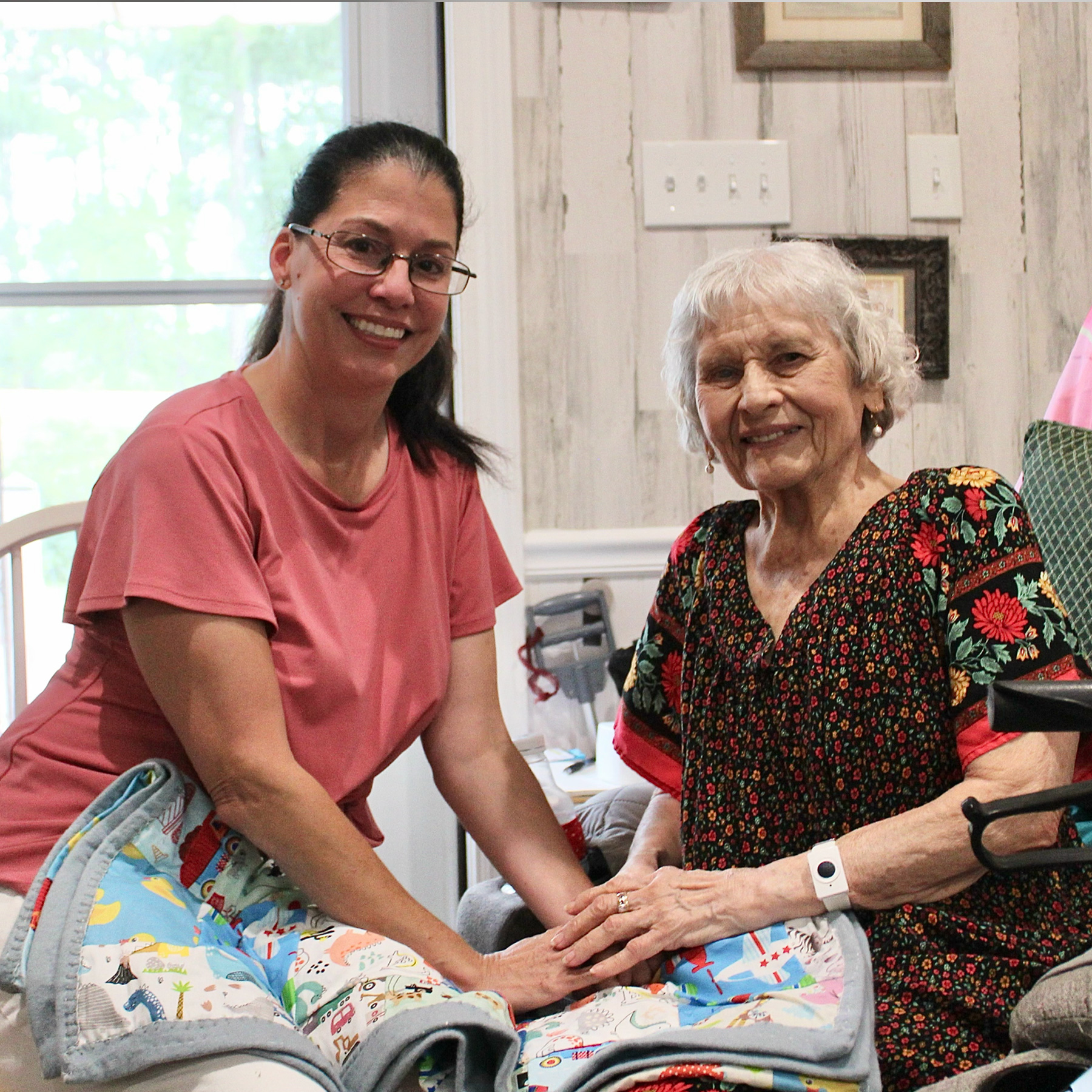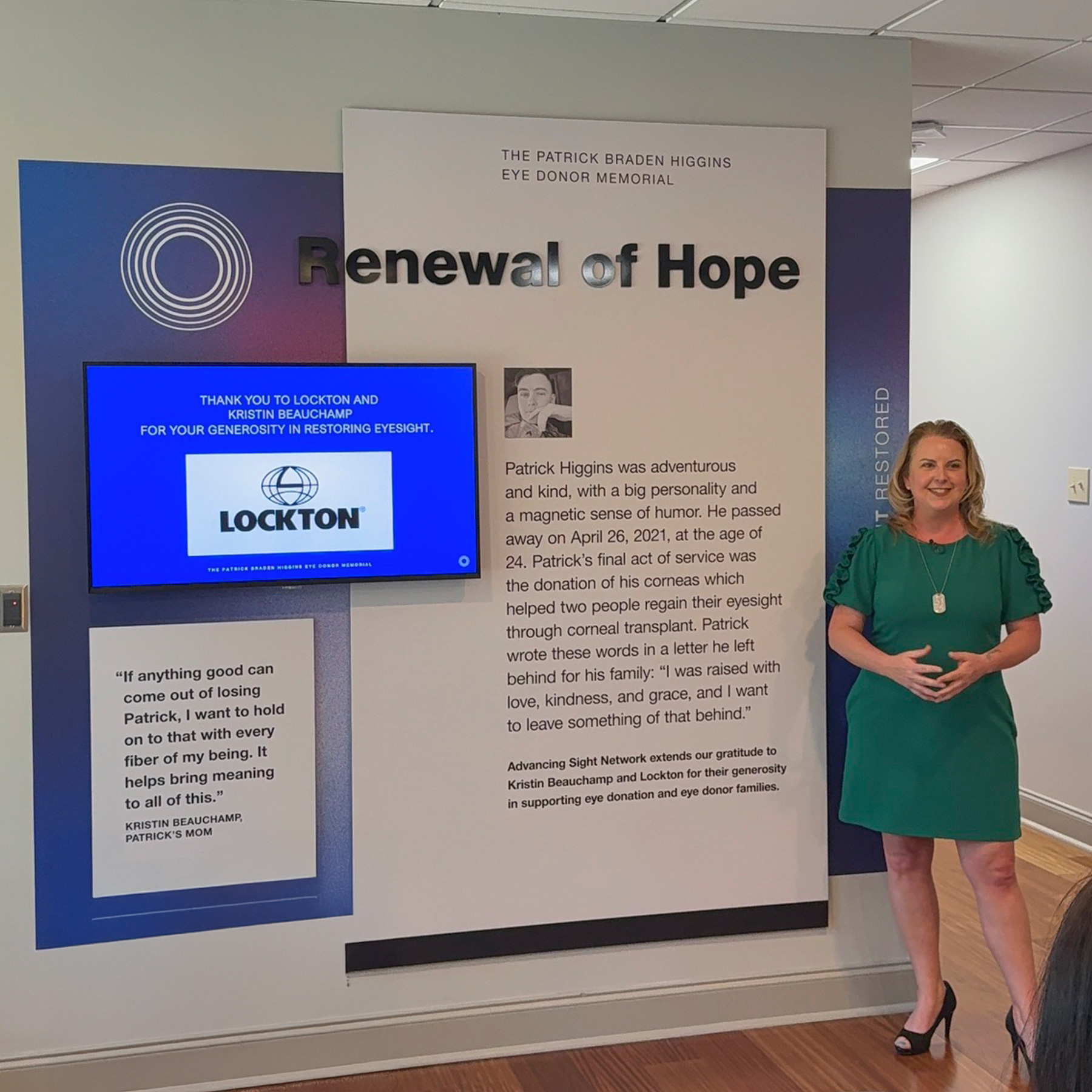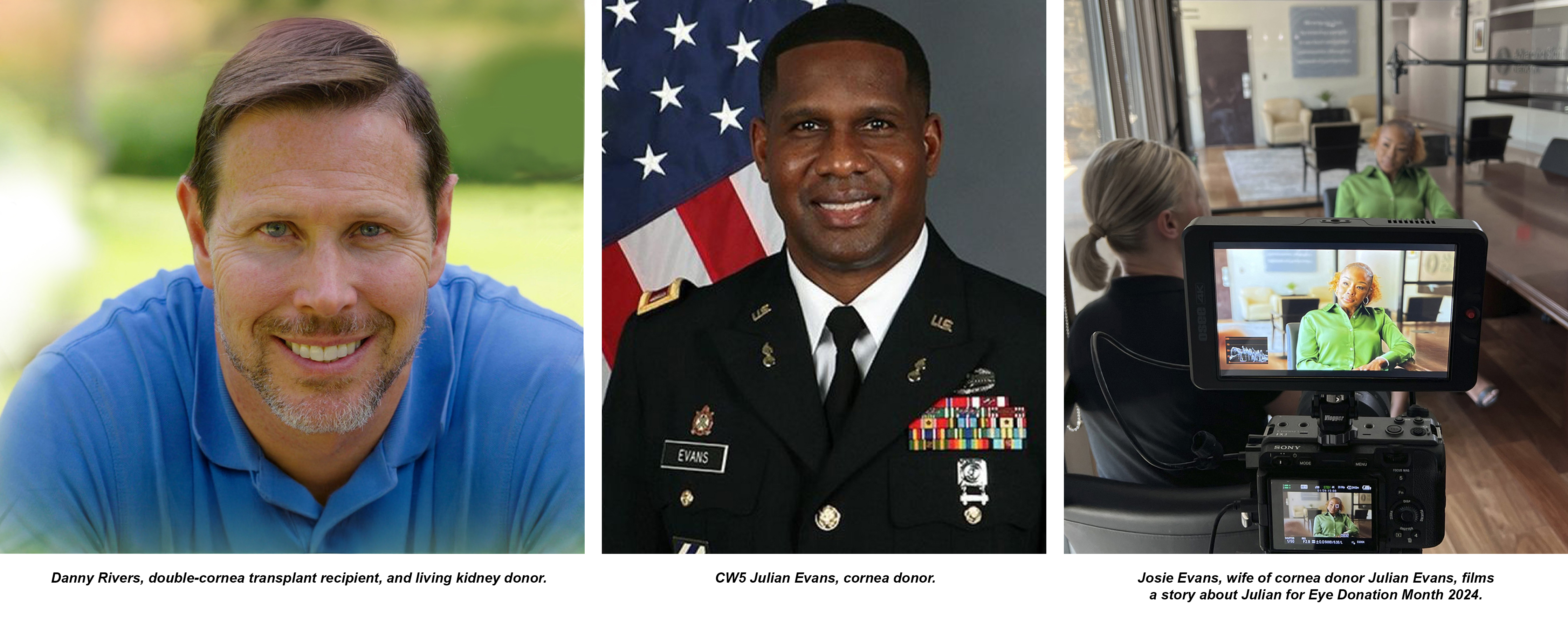
1
Who Can Donate?
Almost anyone can give the gift of sight through eye donation after they’ve passed—even those who wore glasses, used prescription eye drops, or had previous eye surgeries. Donated eye tissue may be used to restore sight through transplant, to develop new therapies for blinding eye diseases through medical research, or to train future eye surgeons and technicians to provide the best care to their patients.
2
The Process Begins.
When someone becomes an eye donor, our Donor Services Team works closely with the hospital and a knowledgeable family member or friend to ensure the donation is possible. Donors must meet certain medical criteria, like being free from conditions that could affect the safety of the donated tissue.
3
Protecting the Gift.
When a person chooses to become an eye donor, we treat their gift with the highest respect and care. A trained recovery technician gently removes the cornea—the clear, outer “window” of the eye—so that it may one day help restore sight for someone in need. The tissue is then placed in a special solution that nourishes and preserves it until it is ready to be used.
4
Precision with a Purpose.
Before a cornea can be offered for transplant, our team carefully reviews the donor’s medical history to ensure the safety of the gift. This process may include reviewing hospital records, speaking with family members, and evaluating infectious disease testing. Every step is taken with great care, attention to detail, and the utmost respect for the donor and their family. Our goal is to honor this generous gift by making sure it is safe and ready to bring hope and healing to someone in need.
5
Matching and Transplant.
Once the cornea is approved, it is offered to a surgeon for their patient. When accepted, the cornea may undergo additional preparation, depending on the type of surgery the recipient needs.
6
Research.
There is no substitute for human eye tissue in the search for cures through research. Thanks to the generosity of donors and their families, researchers can study the eye in ways that lead to better treatments—and one day, lasting cures—for blinding eye diseases. We work with trusted research partners across the country and around the world to advance therapies and cures. Every donation helps move us closer to a future where blindness is a thing of the past. Your loved one’s gift is part of that future, and we are deeply grateful.
7
Education.
Donated eye tissue also plays an essential role in educating and training the next generation of medical professionals. Surgeons use it to practice new and advanced techniques, recovery technicians train with it to learn how to carefully recover corneal tissue, and medical students use it to develop the skills they’ll need to perform delicate procedures—like corneal transplants—on future patients. These opportunities for hands-on learning have a direct impact on patients receiving the safest, most effective care possible, both now and in the future. Your loved one’s gift has a positive impact on countless patients who receive better care because of the training they received.



